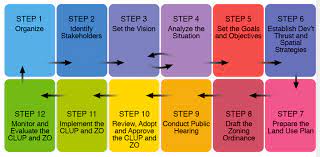Plan using data and evidence.
The Comprehensive Land Use Plan process in the Philippines is composed of 12 steps.
Step 4 is to ANALYZE THE SITUATION.

Why is the step important?
Planners should use data and evidence in assessing the current situation.
With a great situational analysis, development goals, strategies, and actions will be more effective and participatory. Issues in the local government will be better understood.
What is the step about?
Using data, information and evidence to
- identify issues that may hinder the achievement of the LGU vision and
- determine potentials of the LGU that can be maximized to address development issues
The expected outputs include:
- Sectoral and Thematic studies for assessing the situation in the LGU (see Volume 2 of the CLUP Guidebook)
- Current and projected needs, issues and potentials of the LGU for determining development goals and objectives
Read: Formulating Comprehensive Land Use Plans
How does it look like in my Tiwi experience?
- The Ecological Profile is updated, so we saved much time of data gathering and mapping.
- The techniques for CLUP updating I personally used as the Environmental Sector planner are sieve mapping using GIS software, windshield surveys, and stakeholder workshops.
Read: How we updated the Ecological Profile of Bacacay
Top suggestions for LGU planners for this CLUP step
- Work with what you have now. Integrate information as they become available.
- Involve other stakeholders for additional data, information, and analysis. Intent over technique.
- Focus on data and information that directly impacts your LGU vision.
Need my help in updating local plans?
WATCH VIDEO!
Listen on Spotify!
Resource Hub: Formulating Comprehensive Land Use Plans
